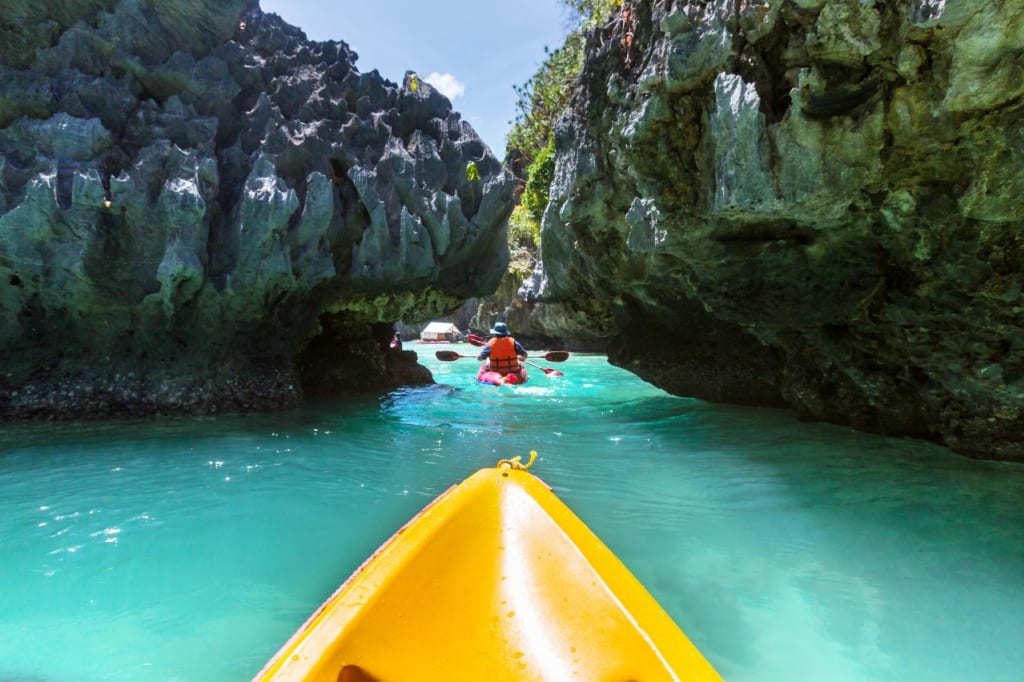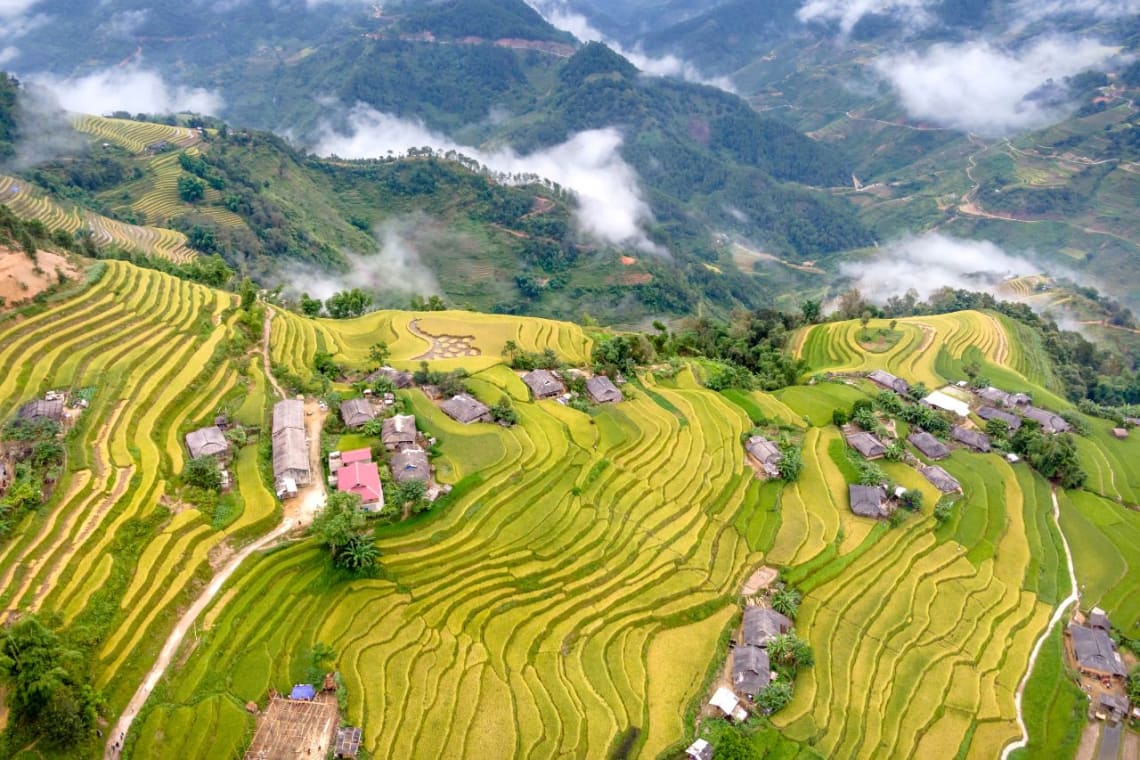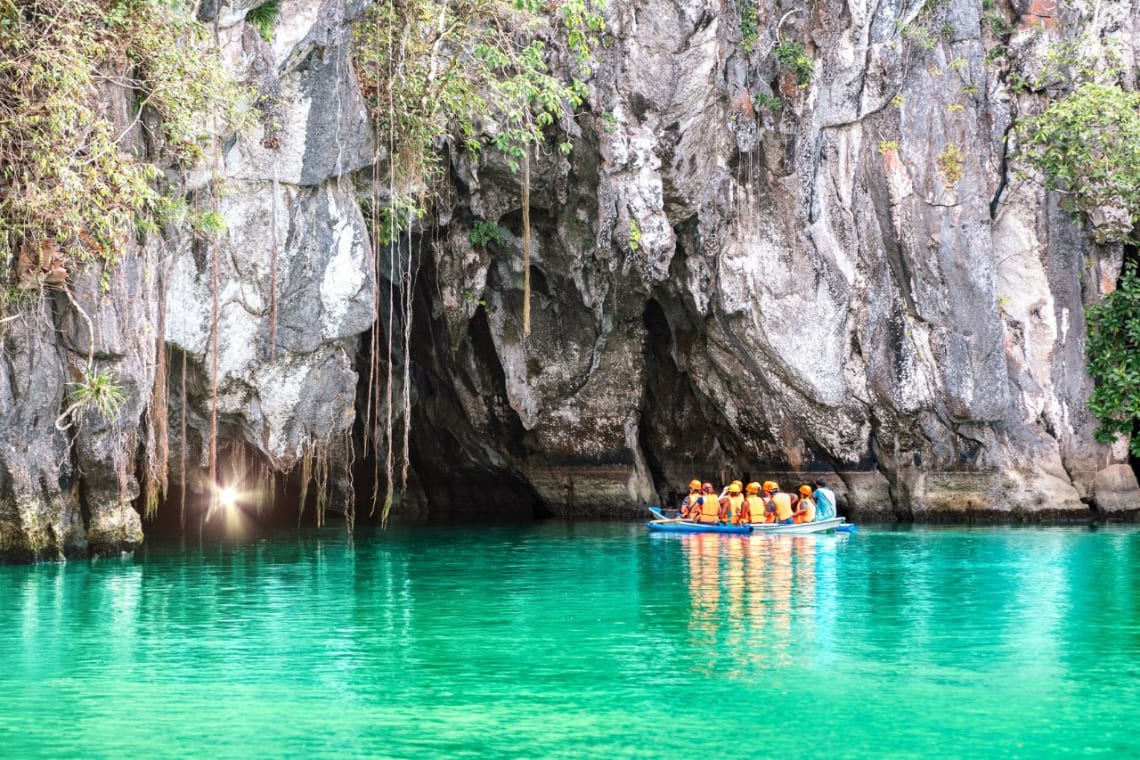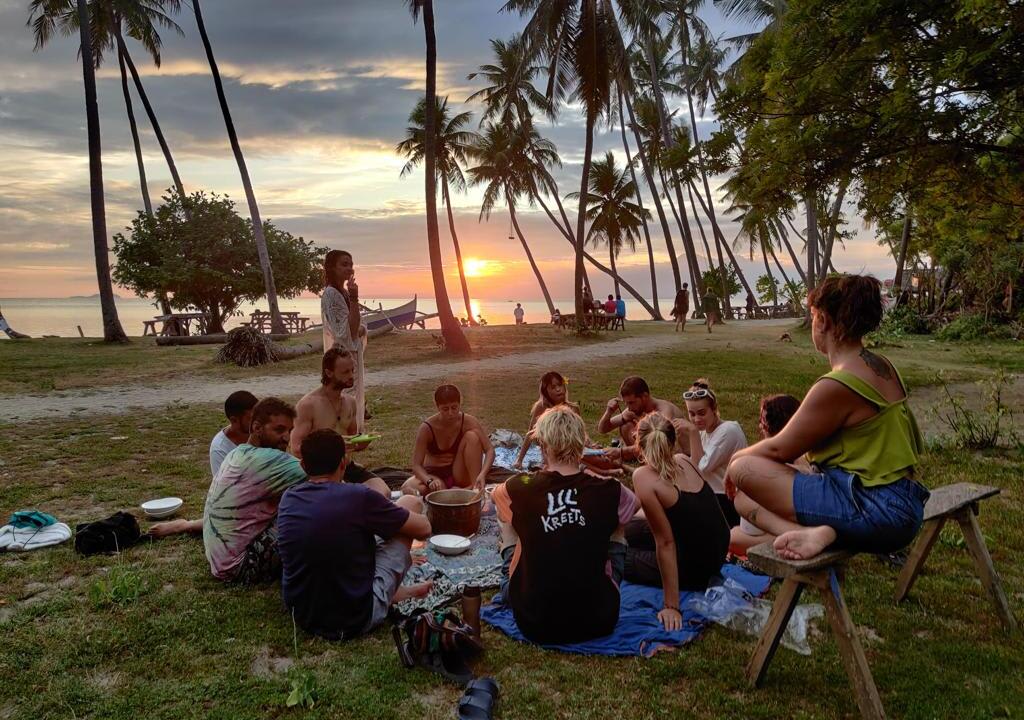Philippines travel guide: What you need to know to plan your trip
Explore the beauty of this Southeast Asian archipelago with our comprehensive Philippines travel guide. Discover top destinations, cultural insights, essential travel tips and more.
13min

Imagine a place where powdery white beaches meet turquoise waters, and lush jungles hide waterfalls waiting to be discovered. Welcome to one of Southeast Asia’s most captivating and diverse countries. Whether you’re seeking a relaxing escape or thrilling outdoor adventures, this archipelago of over 7,000 islands has it all.
Plus, it’s a cheap travel destination, making it easy to stretch your budget without sacrificing quality.
In this Philippines travel guide, we’ll explore the best places to visit, share insider tips, and help you plan an unforgettable journey. From diving into crystal-clear waters to hiking breathtaking trails and soaking in the rich local culture, this guide will equip you with everything you need for an amazing adventure. Ready to embark on your next journey? Let’s dive in!

Best things to see and do in the Philippines
Ready for pristine beaches, stunning landscapes, and cultural immersion? Let's dive into some top spots to add to your Philippines travel plans.
Island hopping in the Bacuit Archipelago (El Nido, Palawan)
Often gracing postcards and travel magazines, El Nido's Bacuit Archipelago needs to be seen to be believed. Picture yourself kayaking through limestone cliffs, snorkeling in turquoise waters teeming with marine life, and basking on secluded paradise beaches like something from a dream.
Numerous tour operators offer set itineraries (Tours A, B, C, and D) that pack popular spots into day trips, but savvy travelers opt for private boats. Having a private boat means you set the pace, dodge crowds, and linger a bit longer at that picture-perfect small lagoon or big lagoon.

Chocolate Hills adventure (Bohol)
No Philippines travel guide is complete without mentioning the Chocolate Hills, over 1,200 perfectly formed, grass-covered mounds dotting Bohol's landscape. During the dry season, these hills turn a rich brown, hence their delicious moniker.
You can rent a motorbike and head to the viewing platform in Carmen for impressive panoramic views, one of the best things to see in the Philippines.

Swimming with whale sharks? (Oslob, Cebu)
This is a controversial one, folks, but we included it on our Philippines travel guide exactly for that reason - as chances that this activity is on your travel plans are high, we have something to say: while witnessing these gentle giants up close is breathtaking, the practice of feeding them to guarantee sightings has sparked debates about responsible tourism.
Interacting with whale sharks responsibly must be a priority, so research ethical tours that prioritize the animals' well-being and minimize disruption to their natural behaviors. Look for operators with a strong conservation focus.
If you cannot find any reliable ethical operator, avoid this activity altogether.
More about this topic on: Tips for wildlife watching and how to do it ethically and What is a conscious traveler and how can you become one?

Hiking the Banaue Rice Terraces
A trip to Banaue offers a profound connection to the Philippines' rich cultural heritage. The 2,000-year-old Banaue Rice Terraces are a remarkable testament to human ingenuity and perseverance.
Carved meticulously into the mountainsides by the Ifugao people, these terraces showcase the traditional farming techniques that have been passed down through generations.
Walking along the terraces, you’ll not only witness the intricate irrigation system that has sustained rice production for centuries but also the stunning vistas that stretch as far as the eye can see, making it one of the best places to visit in the Philippines.
The lush, green steps of the terraces, especially during planting season, create a mesmerizing landscape that feels almost otherworldly. The planting season typically begins around April and May. This is when the fields are flooded and the rice seedlings are transplanted into the terraces. The rice is usually harvested around August to September, after which the fields may appear golden or even brown as they are prepared for the next cycle.

Unveiling the Puerto Princesa Subterranean River (Palawan)
Prepare for a subterranean adventure through the Puerto Princesa Subterranean River National Park, a UNESCO World Heritage Site.
This underground river winds for five miles through stunning limestone caves, showcasing awe-inspiring formations and a dazzling array of stalactites and stalagmites.
The tour offers an opportunity to witness incredible rock formations and diverse wildlife, including bats and swiftlets. The serene ambiance and crystal-clear waters add to the experience, making it a memorable adventure.
Be sure to book in advance, as this popular attraction can fill up quickly.

Surfing in Siargao
Siargao, dubbed the "Surfing Capital of the Philippines", is a magnet for wave riders worldwide. This teardrop-shaped island boasts consistent swells and a laid-back island vibe.
Beginners can sign up for surf camps while seasoned pros can tackle the legendary Cloud 9 break. If you happen to visit while you're in the Philippines, you'll be in for a real treat as this area is known worldwide.
Besides surfing, Siargao island is a stunning destination where you can explore places like the magnificent Sugba lagoon.

Canyoneering in Badian, Cebu
Adventure junkies, this one's for you. Canyoneering through the Kawasan Falls in Badian, Cebu is an exhilarating experience.
Rappel down waterfalls, swim through crystal-clear pools, and soak up the beauty of the lush canyon. Just remember to pack water shoes and a waterproof bag to protect your belongings. Be careful, as if it has rained a lot, the water quality can be dangerous to swim in, it's best to ask a local or your guide.

Port Barton peaceful atmosphere (Palawan)
Port Barton offers respite from bustling tourist spots like Boracay or El Nido. This small cove radiates calmness; it invites travelers seeking solitude or couples desiring romantic strolls along less trodden paths beside still blue waters where time seems to stand still.
Nature lovers will find ample opportunities for wildlife encounters here too: kayaking through mangroves might lead you face-to-face with rare Philippine tarsiers peeking back curiously while overhead billowing palm trees whisper tales only wind understands fully.

Natural and supernatural magic in Siquijor
Often shrouded in mystery and enchantment, Siquijor Island is a hidden gem in the Philippines that's perfect for a serene getaway.
Explore pristine spots like Salagdoong Beach, famous for its cliff diving and turquoise waters, or take a dip in the magical Cambugahay Falls, where multi-tiered cascades invite you to relax and swim.
Wander through charming towns, visit centuries-old churches, and soak in the island’s natural beauty.
Siquijor is also renowned for its traditional healing practices and folk magic, adding a touch of mystique to your visit.

Exploring colonial legacy in Vigan (Luzon)
Stepping into Vigan is like traveling back in time. This historic city in the Ilocos Sur province, Luzon, is famed for its well-preserved Spanish colonial architecture and charming cobblestone streets.
As a UNESCO World Heritage Site, Vigan offers a captivating glimpse into the Philippines' colonial past. Wander through Calle Crisologo, the city’s most iconic street, lined with ancestral houses and quaint shops that showcase traditional crafts and local delicacies.
The city’s heritage comes alive through its beautifully restored buildings and historical landmarks, including the 18th-century St. Paul’s Cathedral and the old bell tower.

Philippines travel itineraries
This Philippines travel guide wouldn't be complete without suggesting some itineraries to get your travel planning started. They are just a guide, you can adjust as needed. There are direct flights from Manila to most other major cities in the Philippines.
Bear in mind that given the unique layout of the Philippines, travel times are longer compared to other Southeast Asian countries like Thailand, Cambodia or Vietnam. Don't try to squeeze too many places in a short visit or you'll end up frustrated.
7-Day Itinerary
Here’s a compact yet fulfilling 7-day itinerary to help you make the most of your trip:
- Day 1-2: Manila
Arrive in Manila and, if you have time and energy, enjoy a stroll through Makati or Chinatown, the most liveliest part of the city.
The following day take a visit to Intramuros, the historic walled city, exploring Fort Santiago and the San Agustin Church.
- Day 3-4: Banaue
Marvel at the 2,000-year-old rice terraces, and enjoy a guided trek through this UNESCO World Heritage site.
- Day 5-7: El Nido
Fly to El Nido for stunning beaches and crystal-clear waters. Enjoy island-hopping tours to explore lagoons, hidden beaches, and snorkeling spots.
Optionally, visit the Puerto Princesa Subterranean River or Port Barton depending on your preference and available time.
10-Day Itinerary
To the previous itinerary you can add a visit to Vigan or a longer exploration of Palawan island, including Port Barton and the Subterranean River.
15-Day Itinerary
- Day 1-2: Manila
Discover Manila’s historical and cultural landmarks, including Intramuros, Rizal Park, and a few local eateries.
- Day 3-5: Banaue
Spend a few days exploring the rice terraces and nearby villages. Consider a day trip to the Batad Rice Terraces for additional scenic views.
- Day 6-8: El Nido
Fly to El Nido. Enjoy multiple island-hopping tours to fully experience its beautiful lagoons, hidden beaches, and snorkeling spots.
- Day 9-11: Puerto Princesa or Port Barton
Head to Puerto Princesa. Take a tour of the Subterranean River and explore the surrounding natural beauty. Visit local markets and enjoy some fresh seafood.
If you are in the Philippines mainly for the stunning beaches, then you can opt for some day of relaxation in Port Barton instead of Puerto Princesa.
- Day 12-15: Siargao or Bohol
Fly to Siargao for surfing and island hopping, or to Bohol for an exciting island exploration on rented motorbike, including world-famous Chocolate Hills.

The best time to go to the Philippines
Philippines weather can vary greatly depending on the time of year and even the region you’re in. The archipelago enjoys a tropical climate with high temperatures and humidity year-round, but has distinct wet and dry seasons.
Every season offers something different, and understanding those pros and cons will ensure an incredible Philippine adventure.
One thing is certain: with the unique climate and diverse geography of the Philippines, researching the weather is a must for this trip.
The dry season (November to May)
Generally considered the best time to visit the Philippines, the dry season offers the most sunshine, lower humidity, and the calmest seas.
These months are ideal for indulging in the quintessential Philippines experiences like exploring white sand beaches, diving into crystal clear waters, and hiking through its stunning natural landscapes.
However, the peak months within the dry season - particularly February to May - see a surge in tourist traffic in some destinations, resulting in higher prices and more crowds. That's something to keep in mind as you make your travel decisions.
Luckily, Philippines is such a big country that there are plenty of places that are totally free of mass tourism - yes, including stunning beaches!
The wet season (June to October)
The Philippines' wet season comes with heavier rainfall and the possibility of typhoons. But it also brings with it lush green landscapes, cheaper accommodation options, and significantly fewer tourists.
Just remember to pack your waterproof gear, check local weather forecasts frequently, and stay very flexible with your travel plans - you may need to change them more than once.

The best way to travel in the Philippines
Are you interested in immersing yourself in the local culture? Then, here’s a tip: if you want to understand the country much better than a typical tourist and live like a local, Worldpackers has got your back — this work exchange platform allows you to spend weeks or months in the Philippines (or over 140 of other destinations around the world) without paying for accommodation.
You’ll exchange your skills for a place to stay and possibly extra perks, like meals and free activities. But the best part is that you’ll get the chance to dive headfirst into an authentic cultural exchange.
There are dozens of opportunities to volunteer in the Philippines from NGOs and schools to popular hostels, where you’ll get to create bonds with locals and fellow travelers. This kind of immersive travel doesn’t just broaden horizons; it builds bridges between different walks of life. You'll not only leave with memories but also friendships forged over shared experiences—the true essence of traveling.
These are some examples of what we are talking about:
- Help this vegan farm building an agricultural retreat and enjoy beautiful Iloilo.
- Experience permaculture and homesteading in Siquijor!
- Are you good at social media marketing? Then check out this position at a surf camp.
- Help at the bar and reception of the popular Kame House Backpackers in El Nido.
Want to know more about the the volunteering programs? Read "Traveling with Worldpackers: your top questions answered".

Philippines travel guide: other important info
Now, let's cover the essential information that will help make planning your Philippines' trip a breeze.
Visa requirements
Citizens from most countries are granted visa-free entry to the Philippines for a stay of up to 30 days, including the US, Canada, EU countries, the UK, Australia and New Zealand.
If you want to stay longer, you'll need to apply for a 59-days tourist visa.
Check the Philippine Bureau of Immigration's official website (immigration.gov.ph/) to ensure you have the most up-to-date information based on your nationality.
Packing essentials
Here are a some essentials to help you navigate island life:
- Power adapter: The Philippines uses Type A, B, and C plugs (like the US). A universal adapter can be a lifesaver, especially if you're using electronics from different countries.
- Insect repellent: Essential for keeping mosquitoes and other insects at bay, especially if you're visiting rural areas or jungles.
- Sunscreen: The tropical sun is strong, so bring a high-SPF sunscreen to protect your skin from harmful UV rays.
- Waterproof dry bag: Island hopping often involves wet boat rides. Protect your valuables like phones, cameras, and cash with a sturdy dry bag.
- Light rain jacket: Tropical rain showers can be sudden and heavy. A compact rain jacket will keep you dry without taking up much space.
- Lightweight clothing: The Philippines is warm and humid, so pack breathable, quick-dry clothing like cotton shirts, shorts, and sundresses to stay comfortable.
- Quick-dry towel: Useful for beach days, waterfall explorations, and hostel hopping. Opt for microfiber – they pack light and dry in a flash.
- Flip-flops and comfortable sandals: Ideal for the beach and walking around towns. Opt for water-resistant options that are easy to slip on and off.
- Sarong or beach towel: A lightweight sarong doubles as a towel, cover-up, or even a blanket, making it a versatile travel essential.
- Snorkeling gear (Optional): If you love snorkeling (and you'll in the Philippines crystal-clear waters), consider bringing your own mask and snorkel for comfort and convenience during island tours.
Check out our essential beach packing checklist so you don't forget anything.
Language
Filipinos are known for their hospitality and willingness to help foreigners. English is one of the two official languages, and widely spoken throughout the country, particularly in tourist destinations.
But learning a few basic phrases of Tagalog, aka Filipino (the other official language and the most spoken one) will be welcomed with warm smiles. It's a fantastic way to show respect for the local Filipino culture.
This article about what languages are spoken in the Philippines will help you out.

Currency
The official currency is the Philippine Peso (PHP). It's advisable to exchange your money at authorized money changers upon arrival, but not a large sum at the airport as exchange rates are lower than in the city.
Larger cities and tourist hubs will have ATMs, but smaller islands may have limited or no ATM access and most transactions will be in cash only.
Respecting the local culture
As we said, Filipinos are famously friendly folks, but good manners never hurt anybody, and you must always remember you’re the one who should adapt to their culture.
- Take shoes off when entering homes and avoid confrontation because saving face matters here too much.
- It is expected that the elderly are treated with a lot of respect.
- Filipinos tend to dress modestly. Try to blend in by observing how people dress and avoiding outfits that are too revealing, specially when visiting churches and religious sites.
- Haggling is common: Don't be afraid to negotiate prices at markets and souvenir shops, especially if you're visiting the Philippines for an extended stay.
- Surely though no matter what: smile often—it's universal language, but even more here in the Philippines.
Try the local food
Filipino food might not be the most popular among the Southeast Asian gastronomy, but sampling the local cuisine is always a great way of getting closer to the local culture. Filipinos love their food and will happily share suggestions about what to try and where to find the "real deal".
These are 10 of the most popular dishes:
- Adobo: Often considered the national dish, Adobo is a savory stew made with chicken, pork, or both, marinated in vinegar, soy sauce, garlic, and spices. The slow-cooked result is tender meat with a rich, tangy flavor.
- Sinigang: A sour tamarind-based soup, Sinigang is usually made with pork, shrimp, or fish, and includes vegetables like tomatoes, radish, and green beans. The broth’s tangy flavor makes it a refreshing yet hearty dish.
- Lechon: Lechon, a whole roasted pig, is a staple at Filipino celebrations. Slow-cooked over an open flame, it has crispy skin and tender meat, often served with a sweet and tangy liver sauce.
- Kare-Kare: A rich and hearty stew made with oxtail, Kare-Kare features a thick peanut sauce and is typically served with vegetables like eggplant and banana blossoms. It's often enjoyed with a side of shrimp paste (bagoong).
- Pancit: Pancit refers to a variety of noodle dishes, with Pancit Canton and Pancit Bihon being the most popular. Stir-fried with vegetables, meat, or seafood, Pancit is a flavorful and versatile dish often served at celebrations.
- Lumpia: Lumpia are Filipino spring rolls, either fresh or fried. They are filled with a mix of ground meat and vegetables, wrapped in a thin pastry. Crispy and flavorful, Lumpia are a popular appetizer or snack.
- Sisig: Sisig is a sizzling dish made from chopped pork, usually from the pig’s face and ears, marinated in vinegar, calamansi, and chili peppers. Served on a hot plate, it’s crispy, tangy, and packed with flavor.
- Tinola: Tinola is a comforting chicken soup flavored with ginger, garlic, and fish sauce. It’s typically cooked with green papaya and malunggay leaves, making it a light, nutritious dish that’s perfect for rainy days.
- Bicol Express: A spicy and creamy dish from the Bicol region, Bicol Express is made with pork, coconut milk, shrimp paste, and lots of chili peppers. It’s known for its rich flavor and fiery kick, ideal for spice lovers.
- Halo-Halo: A refreshing dessert, Halo-Halo is a colorful mix of shaved ice, sweet beans, fruits, jellies, and leche flan, topped with evaporated milk. The name means “mix-mix,” and it’s the perfect way to cool down on a hot day.

If you liked this Philippines travel guide, follow Worldpackers social media to keep up with the news: we are on Instagram and Tiktok!












fedaa
Sep 09, 2024
Hi